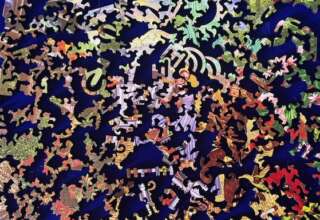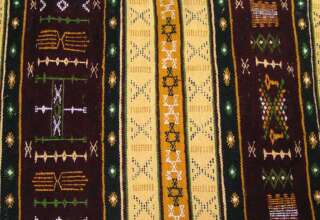
While Johnson speculates that this structure might be a remnant of the former group marriage practices of many African community, I would suggest that this structure was sustained at least in part because it could remain in place even if the community was in motion.
We also find that the physical possessions of nomadic people—such as the Jews and Bantu—could easily be moved. Among the Jews this often meant purchasing fine jewelry or works of art rather than buildings. Similarly, for the Bantu and later African communities there was no “possession” of the land nor was there any building of permanent buildings. Everything had to move. Furthermore, there was often the sense that nothing had to be permanent. African sculptures, for instance, were often carved from wood rather than from stone (as was the case with Roman and Greek sculptures). That is why we don’t have as many African works of art today as we do works of art from the Greco-Roman world.
Perhaps of greatest relevance for our current analysis is the portability of leadership competencies. Nomadic leaders have relied on “portable” assets (such as knowledge, reputation, and problem-solving skills) rather than on “tangible” and immovable assets (such as land, buildings or institutional position). Power and respect come not from possessions in a nomadic society but from one’s competencies and capacity to build community. As we will see later, African leaders carry their authority and power with them as they move through life. They didn’t (and still don’t) need a palace nor large number of deputies to show their strength.
There were many attempts to push Sub-Sahara people into institutional forms. Modem nation-states have often failed, as have modern management principles. Landholding societies are more easily moved to modem institution-based models of leadership than are nomadic societies. Nomadic societies, however, may be much more appropriate to our emerging postmodern world, with its highly flexible boundaries, shifting alliances, and “troubling ambiguity.” (Jameson, 1991)










Charly Wiliamse
August 16, 2021 at 10:23 pm
I have thought so many times of entering the blogging world as I love reading them. I think I finally have the courage to give it a try. Thank you so much for all of the ideas!
power bi course
December 7, 2021 at 7:29 am
Thanks for sharing information.